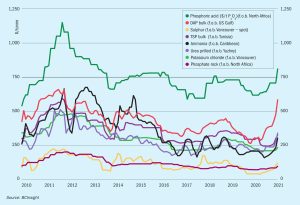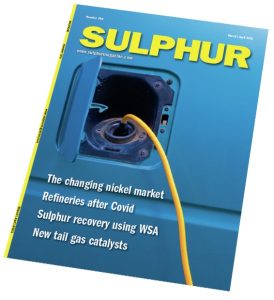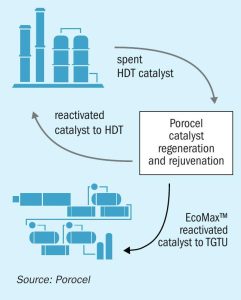
Sulphur recovery projects 2021
Sulphur’s annual survey of recent, current and future sulphur recovery unit construction projects maps the developing shape of brimstone production from fuel and gas processing plants worldwide.

Sulphur’s annual survey of recent, current and future sulphur recovery unit construction projects maps the developing shape of brimstone production from fuel and gas processing plants worldwide.

Major projects to consider in the short term outlook are Barzan in Qatar and the Clean Fuels Project in Kuwait. Combined these would add over 3 million t/a of sulphur capacity.
Tecnimont has been awarded a $1.5 billion contract by Nigeria’s Federal Executive Council to carry out rehabilitation works at the Port Harcourt refinery in Rivers State, run by the state-owned Nigerian National Petroleum Company (NNPC). The contract covers engineering, procurement and construction (EPC) activities for a full rehabilitation of the Port Harcourt refinery complex, aimed at restoring the complex to a minimum of 90% of its 210,000 bbl/d nameplate capacity. Tecnimont says that the project will be delivered in phases from 24 and 32 months and the final stage will be completed in 44 months from the award date.

We profile a selection of the leading players in India’s large and dynamic domestic fertilizer industry.

ICIS, the independent commodity intelligence company, provides an overview of the nitrogen market. The world supply of urea looks set to outpace market demand in 2021, as several new projects come on-stream. Global ammonia demand, in contrast, is expected to rebound strongly this year after a difficult 2020. The flurry of recent green ammonia projects announcements is another significant market development.

Fertilizer markets are rallying to an extent not seen in almost a decade. This is primarily being driven by strong demand fundamentals, with crop prices moving to their highest point since 2013. But low pipeline inventories and supply disruptions have also played a part. In this guest editorial, CRU’s Chris Lawson explains what’s driving this rally and highlights the key supporting factors.

Market Insight courtesy of Argus Media

Suddenly it’s a good time to be a sulphur producer again. Sulphur prices started 2020 at a low point of $40/t, a level not seen for a decade or more. However, after a slight recovery when the pandemic hit and refineries began reducing production, since August the market trend has been rapidly upwards, now approaching levels of $200/t that have not been seen for a couple of years.

EcoMax™ tail gas catalysts offer a sustainable and cost effective choice for tail gas catalysts. They are made from spent hydroprocessing catalysts, which reduces the environmental and socioeconomic impacts of sourcing fresh cobalt and molybdenum and therefore supports operators’ sustainability goals. B. Visioli of Porocel (a part of Evonik) discusses the benefits of catalyst reuse from hydroprocessing for tail gas treating.

Sour gas processing presents a number of unique challenges, especially at high levels of hydrogen sulphide and carbon dioxide content.